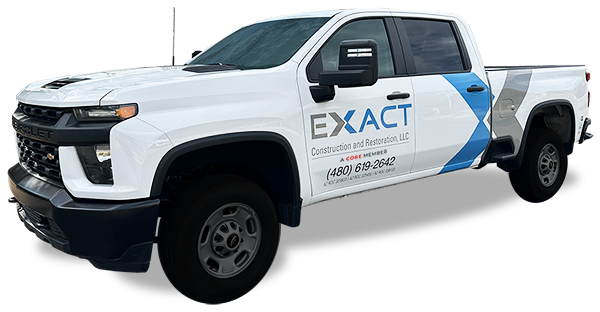In this comprehensive guide, we will walk you through the essential steps to effectively recover from water damage. By following these expert-endorsed tips, you can take control of the situation and restore your space to its pre-damaged state.
Key Takeaways:
- Assess the extent of the water damage before starting the recovery process.
- Prioritize safety by taking precautions and mitigating potential hazards.
- Extract the excess water and ensure thorough drying to prevent further damage.
- Salvage and clean water-damaged belongings using proper techniques.
- Tackle mold and mildew to prevent health risks and further damage.
Assessing the Damage
Before you can start the recovery process, it is crucial to assess the extent of the water damage. By evaluating the damage, you can understand the severity of the situation and effectively plan your next steps.
When assessing water damage, there are several key factors to consider:
- The source of the water: Determining the cause of the damage helps identify any ongoing issues and prevent future incidents.
- The affected areas: Inspect every room and surface that may have been exposed to water. Pay close attention to walls, floors, ceilings, furniture, and appliances.
- The extent of damage: Evaluate the level of saturation, warping, discoloration, and deterioration caused by water. This will help determine the necessary repairs and restoration efforts.
- Secondary damage: Be aware of any additional damage that may have occurred due to prolonged exposure to water, such as mold growth or structural issues.
Assessing water damage can be challenging, especially if it is extensive or hidden from plain sight. In such cases, it is advisable to seek professional assistance to ensure a thorough evaluation.
Once you have assessed the extent of the water damage, you can proceed with the necessary steps to recover and restore your space. In the next section, we will focus on safety precautions and hazard mitigation after water damage.
Safety First: Mitigating Hazards
Safety should be your top priority when dealing with water damage. It is essential to protect yourself and take necessary precautions to prevent further hazards. Here are some crucial safety measures you should consider:
- Electrical Dangers: Turn off the power supply to the affected areas to avoid electrocution. Do not touch any electrical appliances or switches if you are standing on a wet surface. If you are not sure about the safety of the electrical system, contact a professional electrician for assistance.
- Structural Integrity: Assess the structural stability of your home or building. Water damage can weaken the foundation, walls, and ceilings. Avoid entering areas that show signs of structural damage, such as sagging or cracking walls. Consult a professional contractor or engineer if you suspect significant structural issues.
- Mold Growth: Water damage creates the perfect environment for mold growth. Mold can trigger allergies and respiratory issues. Wear protective gear, such as gloves, goggles, and a mask, when dealing with mold-contaminated areas. Properly clean and dry the affected areas to prevent mold spores from spreading.
Water Damage Hazards
Water damage can introduce various hazards that can be harmful to your health and safety. Understanding these hazards can help you take appropriate precautions and prevent further damage:
- Slip and Fall Risks: Wet surfaces can be slippery, increasing the risk of falls and injuries. Use caution when walking on wet floors and stairs. Place warning signs to alert others of potential hazards.
- Contaminated Water: Depending on the source of water damage, the water may be contaminated with harmful substances, including bacteria, chemicals, and sewage. Avoid contact with the water and seek professional assistance for proper cleaning and disinfection.
- Sharp Objects: After water damage, debris and broken objects may be present. Be cautious when handling and removing items to avoid cuts and injuries. Wear sturdy gloves and proper footwear for added protection.
| Hazard | Precautions |
|---|---|
| Electrical Dangers | Turn off the power supply and contact a professional electrician. |
| Structural Integrity | Consult a professional if significant damage is suspected. |
| Mold Growth | Wear protective gear and properly clean affected areas. |
| Slip and Fall Risks | Use caution and place warning signs in wet areas. |
| Contaminated Water | Avoid contact and seek professional cleaning and disinfection. |
| Sharp Objects | Wear protective gloves and footwear when handling debris. |
Water Extraction and Drying
To prevent further damage and promote effective recovery, it is crucial to remove the excess water and thoroughly dry the affected areas. Proper water extraction and drying techniques will ensure that your space is restored quickly and efficiently.
Water Extraction: The first step in the process is to extract the standing water from your property. There are various methods and equipment available for water extraction, depending on the extent of the damage. Some common techniques include:
- Using submersible pumps to remove large volumes of water
- Using wet vacuums to extract water from carpets and upholstery
- Using mops, buckets, and squeegees to remove water from hard surfaces
Drying Out: Once the excess water is removed, it is essential to thoroughly dry the affected areas to prevent mold growth and further damage. Here are some effective drying techniques:
- Using dehumidifiers to reduce humidity levels in the air
- Using fans and air movers to circulate air and accelerate evaporation
- Opening windows and doors to facilitate airflow
It is important to monitor the drying process regularly. Check for signs of dampness or moisture, especially in hidden or hard-to-reach areas. If necessary, continue the drying process until the affected areas are completely dry.
| Water Extraction Equipment | Pros | Cons |
|---|---|---|
| Submersible Pumps | – Can remove large volumes of water quickly – Suitable for severe water damage situations |
– Requires electricity or fuel – May be challenging to access certain areas |
| Wet Vacuums | – Effective for extracting water from carpets and upholstery – Portable and easy to use |
– Limited capacity – May not be suitable for large-scale water extraction |
| Dehumidifiers | – Reduce humidity levels and prevent mold growth – Enhance the overall drying process |
– Require electricity – May take longer to extract moisture |
| Fans and Air Movers | – Speed up evaporation – Enhance airflow and drying |
– Not effective for extracting standing water – Requires continuous monitoring |
Salvaging and Cleaning
Water damage can be devastating, but with the right techniques, you can salvage many of your belongings. This section will guide you through the proper methods to clean and restore various items affected by water damage.
Cleaning Furniture
When it comes to salvaging water-damaged furniture, acting quickly is crucial. Start by removing any wet cushions or upholstery and placing them in a well-ventilated area to dry. Use absorbent towels to blot excess water from the furniture, and avoid rubbing, as it can cause further damage. Once dry, clean the surface with a mild detergent and water, then rinse and dry thoroughly.
Restoring Electronics
Electronics can be particularly vulnerable to water damage. If your devices have been exposed to water, power them off immediately and remove any batteries or power sources. Allow them to dry completely before attempting to turn them on. For more delicate electronics, consult a professional for cleaning and restoration.
Cleaning Documents
Water-damaged documents, such as important papers or photographs, require special care. Handle them gently and ensure your hands are clean and dry to avoid further damage. If the documents are wet, lay them flat on absorbent material and allow them to air dry. For moldy documents, consult a professional conservator who specializes in document restoration.
Restoring Other Possessions
Depending on the nature of the items, different cleaning techniques may be required. For clothing and textiles, wash them immediately using a mild detergent and follow the care instructions. For books, freeze them to prevent further damage and consult a professional for proper restoration. Valuables, such as jewelry or fine art, should also be assessed by professionals to ensure proper cleaning and restoration.
Remember, every item requires careful attention and individual treatment. When in doubt, consult professionals who specialize in water damage restoration to ensure the best chance of salvaging and cleaning your belongings.
| Belonging | Cleaning Technique |
|---|---|
| Furniture | Remove wet upholstery, blot excess water, clean with mild detergent and water, rinse, and dry |
| Electronics | Power off, remove batteries, allow to dry completely, consult professional if necessary |
| Documents | Air dry flat on absorbent material, consult professional for moldy documents |
| Textiles | Wash immediately with mild detergent, follow care instructions |
| Books | Freeze to prevent further damage, consult professional for restoration |
| Valuables | Consult professionals for proper cleaning and restoration |
Tackling Mold and Mildew
Water damage can have significant consequences, including the growth of mold and mildew. These issues not only cause further damage to your property but also pose health risks to you and your family. It’s crucial to address mold and mildew promptly to prevent their spread and protect your well-being. In this section, we will explore effective strategies for identifying, removing, and preventing mold and mildew in your water-damaged space.
When dealing with mold removal, it’s important to remember that different types of mold may require specific approaches. Before starting the remediation process, it’s advisable to consult with a professional mold inspector or an expert in mold removal.
If you’re confident in tackling the mold issue yourself, here are some key steps to follow:
- Identify the mold: Start by visually inspecting the affected areas for visible signs of mold growth, such as discoloration, stains, or musty odors.
- Protect yourself: Mold can release spores that can be harmful when inhaled, so it’s important to use appropriate personal protective equipment (PPE) including gloves, goggles, and N95 respirator masks.
- Contain the mold: To prevent the mold from spreading to unaffected areas, isolate the contaminated area by sealing off doors, windows, and vents. Use plastic sheeting to cover openings and create a containment barrier.
- Remove the mold: Scrub visible mold growth with a mixture of detergent and water. For stubborn mold or larger affected areas, consider using a commercial mold remover. Remember to follow the manufacturer’s instructions.
- Dry the area: Mold thrives in damp environments, so it’s essential to thoroughly dry the affected area. Use dehumidifiers, fans, and open windows to improve ventilation and promote drying.
- Prevent future mold growth: To prevent mold from returning, address the underlying cause of the water damage. Repair any leaks or sources of moisture promptly and maintain proper ventilation in your space.
By following these strategies, you can effectively tackle mold and mildew in your water-damaged space and create a safe and healthy environment for you and your loved ones.
Restoring the Space
Now that you have addressed the immediate damage caused by water, it’s time to restore your space and bring it back to its pre-damaged condition. This section will guide you through the process of repairing the walls, floors, and other affected areas, as well as repainting and restoring your property. By following these steps, you can regain the beauty and functionality of your space.
Repairing Walls and Floors
To repair the walls and floors that have been damaged by water, start by removing any wet or damaged materials. This may include drywall, insulation, or floor coverings. Once the damaged materials are removed, allow the area to dry thoroughly before proceeding with repairs.
For walls, replace any damaged drywall and apply a fresh coat of paint to restore the appearance. If the damage is extensive, you may need to consult a professional contractor for repairs.
When it comes to floors, hardwood may need to be sanded down and refinished. Carpeting and padding should be removed and replaced if they cannot be salvaged. Tile and laminate floors can usually be cleaned and restored.
Repainting the Space
Repainting is an important step in restoring your space after water damage. Choose a high-quality paint that is specially formulated for areas prone to moisture and apply it evenly to the walls and ceilings.
Before painting, ensure that the surfaces are clean and dry. Use a mild detergent and water to remove any mold or mildew, and allow the area to completely dry before applying the paint. A fresh coat of paint can help revitalize the space and give it a fresh, clean look.
Restoring Furniture and Belongings
In addition to repairing the structure of your space, it’s essential to restore your furniture and belongings that may have been damaged by water. Start by thoroughly cleaning and drying any furniture that can be salvaged.
For upholstered furniture, you may need to use a professional cleaning service to remove water stains and odors. Wooden furniture should be thoroughly dried and treated with a wood cleaner or polish to restore its original beauty.
If any of your belongings are beyond repair, make a detailed inventory of the items for insurance purposes and dispose of them properly.
Additional Considerations
Depending on the severity of the water damage, you may need to consult with professionals such as contractors, plumbers, or electricians to ensure that all repairs are done correctly and safely.
Remember to prioritize safety throughout the restoration process. Wear protective gear such as gloves and masks when handling damaged materials, and be cautious of electrical hazards and potential structural weaknesses.
By following these steps and taking the necessary precautions, you can effectively restore your space after water damage and create a safe, comfortable environment once again.
Conclusion
In conclusion, recovering from water damage is a rigorous process that demands careful assessment of the damage, implementation of safety precautions, thorough drying and moisture removal, salvage and cleaning of belongings, addressing mold and mildew growth, and complete restoration of the affected space. By following these essential steps, you can effectively recover from water damage and regain control of your environment.
Remember, assessing the extent of the water damage is crucial before initiating the recovery process. Take the necessary precautions to ensure your safety by mitigating potential hazards such as electrical dangers, structural integrity issues, and mold growth. Prompt water extraction and efficient drying techniques are vital to prevent further damage and promote a successful recovery.
Salvaging and cleaning your water-damaged belongings is possible with the right techniques. Take care to restore furniture, electronics, documents, and other possessions affected by water damage. Additionally, tackle mold and mildew growth promptly to safeguard your health and prevent further damage to your property.
Once the immediate damage is mitigated, it’s time to focus on the restoration of your space. Repair walls, floors, and other affected areas, and restore your property by repainting and bringing it back to its pre-damaged condition. By following these essential steps and prioritizing your recovery efforts, you can overcome water damage and restore your space to its original state.
FAQ
What are the essential steps for water damage recovery?
The essential steps for water damage recovery include assessing the damage, mitigating hazards, water extraction and drying, salvaging and cleaning, tackling mold and mildew, and restoring the space. By following these steps, you can effectively recover from water damage and restore your space to its pre-damaged state.
How do I assess the extent of water damage?
To assess the extent of water damage, thoroughly evaluate the affected areas, identifying any signs of water infiltration, including discoloration, warping, and mold growth. It is also helpful to consult with a professional water damage restoration expert who can provide a comprehensive assessment.
What safety precautions should I take after water damage?
Safety should be a top priority after water damage. Some safety precautions to consider include turning off electrical power to the affected area, wearing protective gear such as gloves and masks, and ensuring the structural integrity of the space before entering.
How do I extract water and dry out the affected areas?
To extract water, you can use tools such as wet vacuums, pumps, or mops. After removing the excess water, it is important to thoroughly dry the affected areas using dehumidifiers, fans, or heaters. Proper ventilation is also crucial to accelerate the drying process.
Can I salvage items after water damage?
Many items can be salvaged after water damage. Furniture, electronics, and documents can often be restored by taking prompt action to dry them out and clean them properly. However, some porous materials, such as mattresses and carpeting, may need to be discarded if they cannot be effectively cleaned and dried.
How do I address mold and mildew growth after water damage?
To tackle mold and mildew after water damage, it is important to identify the affected areas, remove any visible mold growth using appropriate cleaning solutions, and address the underlying moisture issue. Proper ventilation, dehumidifiers, and mold-resistant paints can help prevent future mold growth.
How do I restore the space after water damage?
Restoring the space after water damage involves repairing walls, floors, and other affected areas by replacing damaged materials, repainting, and restoring the space to its pre-damaged condition. It may be necessary to seek professional help for major repairs and renovations.






